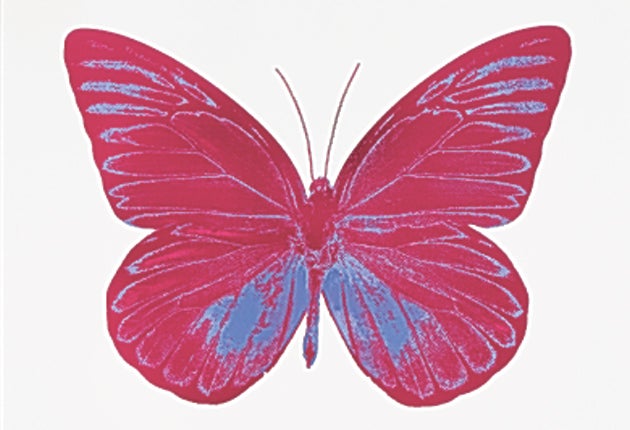Damien Hirst: The Souls, Paul Stolper Gallery, London

Your support helps us to tell the story
From reproductive rights to climate change to Big Tech, The Independent is on the ground when the story is developing. Whether it's investigating the financials of Elon Musk's pro-Trump PAC or producing our latest documentary, 'The A Word', which shines a light on the American women fighting for reproductive rights, we know how important it is to parse out the facts from the messaging.
At such a critical moment in US history, we need reporters on the ground. Your donation allows us to keep sending journalists to speak to both sides of the story.
The Independent is trusted by Americans across the entire political spectrum. And unlike many other quality news outlets, we choose not to lock Americans out of our reporting and analysis with paywalls. We believe quality journalism should be available to everyone, paid for by those who can afford it.
Your support makes all the difference.A small Bloomsbury space on Museum Street, its architecture developed around the time of the nearby British Museum, has been transformed into a gleaming lepidopterist's case. The pale, bright room is filled with white frames lined up in grids. Within each frame is a gleaming foil print of a butterfly, in one of four different shapes and a multitude of different colour combinations. The butterflies shimmer when the light hits them, then return to flat colour when it does not. This is an exhibition of editioned prints by Damien Hirst, produced by Paul Stolper Gallery and Other Criteria, and it envelops several of the artist's well-known concerns: life and death, brutality and beauty, and, indeed, the beauty of dead butterflies.
As one of Britain's most famous artists, Hirst needs no introduction, which is why I was ready to dislike this print show. I hate the way that Hirst is used as a shorthand for British art, because of his fame and money, and the record-breaking auctions. But this print exhibition is a reminder of Hirst's power as an image-maker, and of his ability to create images and projects that can touch viewers. The touch that they feel might, ultimately, be the pull of desire, the cold touch of commerce, beckoning buyers, but there is something very immediate about the experience of looking at these prints that engenders this desire.
For one thing, the prints are very beautiful things. The foil-blocking of each butterfly has been done in three stages: the bottom, base colour print is then accentuated by two more sparkling layers, that pick out details on the patterned wings of the bugs, or the shape of the thoraxes. Not all of the butterflies are three colours, however, some are one or two, and in several cases, layers have been blind-blocked, creating only a change in texture. So, for example, a topaz wing may have details that are more matte, and these details can only be seen when you catch them in the right light. The names of the colour combinations themselves, too, read like a luxurious poetry: "Cool Gold/Raven Black/Blind Impression", or "Hazy Gold/Rustic Copper/Westminster Blue". The most obvious references for the butterflies, particularly in the way that they have been grouped in sets of four, are Andy Warhol's Flowers (1964). Hirst's prints are far more baroque than Warhol's, however, heavier with the kind of thematic grandiosity that is always tied up in his work, but there is a similarity.
Everything about this exhibition, however, is geared towards viewers' experience of themselves as individuals, and, it has to be said, consumers. It's tempting, in a sea of colour combinations on glittery wings, to pick your favourites, and to indulge that the act of picking is unique to you as a character. If you are to choose "Leaf Green/ Emerald Green/Cool Gold", what does this reveal of you, of your soul? This is one of the key premises on which fashion relies. I pick something, and I think it shows the world something of myself. These are the choices that distract us, rather than enlighten us. The cold touch of this exhibition, the systematic production of each butterfly as an individual, ultimately, flattens everything. Everything is as beautiful as everything else.
To 13 November (www.paulstolper.com)
Join our commenting forum
Join thought-provoking conversations, follow other Independent readers and see their replies
Comments